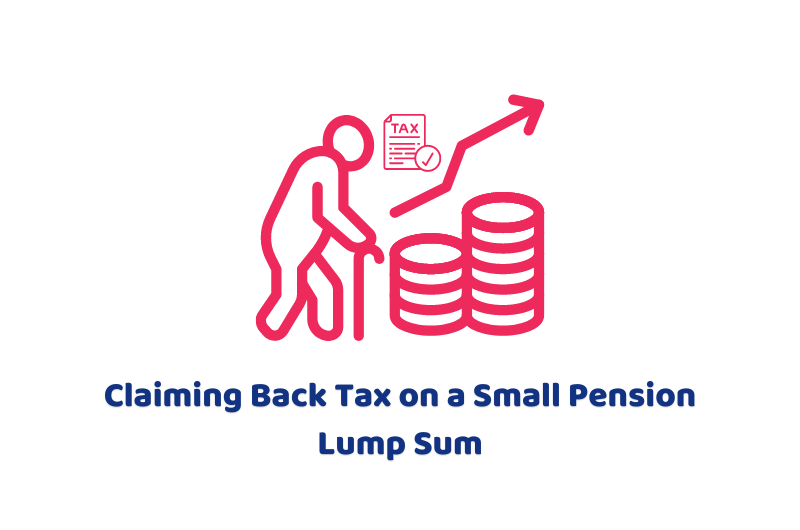In the process of taking a pension lump sum, there are chances of tax payments that are way too much than the required amount of tax. However, you do not need to worry if this has happened to you as you can opt for the solution as a pension tax refund. You can simply claim a refund of the overpayment of tax. Moreover, it depends on the nature of the lump sum that will decide the mechanism of the tax refund. Usually, you are allowed to take 25% of the amount of your pension without any kind of tax implications.
Normally it is an easy and flexible process considered when you aim to access pension savings, however, the case of benefit schemes is quite different in this scenario. If the amount of your pension reaches a certain limit, it is allowable for you to take the pension amount in one go as a lump sum. An individual can avail of three small pots from the pension.
Are you worried about your pension tax refund and how to reclaim it from HMRC? Worry not! AccountingFirms is the best place where you can seek assistance from the best tax advisors.
What is a Potential Tax Overpayment?
As mentioned earlier that 25% of the pension amount is tax-free and you are not liable to pay tax on this amount. However, the rest of the amounts are taxable and you will be charged the marginal rate of the taxpayer on any amount withdrawn after this. The tax is usually deducted from pension payments under the system of PAYE. The code used in this matter is normally the emergency code or the basic rate code. The basic rate code is also known as BR. This does not get affected or take the involvement of any other income stream or personal allowance.
Why Do you Need a Pension Tax Refund?
After you avail the tax-free amount from your pension savings that is the 25% part of it. The remaining amount will be subject to tax matters. Now the income tax you will have to pay on the remaining amount of withdrawal will depend on your unique circumstances. This can vary from one person to another. Sometimes you will observe the emergency tax rate on the taxable withdrawals from your pension according to the instructions of HMRC. This can result in paying more tax than is required for you.
On the other hand, when people tend to take a regular income from pension savings, the tax rate tends to balance out and there are fewer chances of making overpayments when it comes to tax. In the case of a lump sum amount from the savings of pension, the amount will get you charged tax on the emergency rate. In case of the overpayments of tax after emergency rate implications, you can claim a refund and this usually takes a period of 5 to 6 weeks.
What are the Eligibility Criteria for a Pension Refund?
Several online tools offer to check whether you are eligible to meet the required criteria or not. This will let you know whether to claim for the overpayments on lump sum withdrawals from the pension savings or not. All you will have to do is to answer a few questions and you will be provided with the information on meeting the criteria. This process could involve the questions like whether you are a beginner in the process of pension withdrawals or if you are doing it for the first time.
Sometimes the process goes on smoothly, however, it gets complicated at some money. It depends on your circumstances. There is a chance in the rules and legislation as well. The area you belong to will also affect the process as the rules are different if you are residing in Wales, Northern Ireland, or England. If you are living in Scotland, the tax rates and bands are likely to be different for you.
Tax Refund Mechanism
In the case you are sure that you have made an overpayment of tax, your circumstances will decide the mechanism of the refund process. For instance, if the lump sum withdrawal from your pension saving is made from the contribution scheme, there is a requirement of form P50Z. This will be the case if the taxpayer does not have any other income source for the same tax year. On the other hand, if an individual has used the pension pot for the lump sum amount but he has an income source in the same tax year, there will be a requirement of P53Z in the process of refund.
In some of the cases neither the pension pot is used nor the regular withdrawals are there but there is a case of overpayment, this scenario will require the form P55. Moreover, in the case of a trivial commutation lump sum, self-assessment is the way out to claim a refund. Sometimes it is not required for an individual to complete the tax returns, you can use form P53 in such a scenario.
The Bottom Line
Now that you have gathered a fair amount of information about a pension tax refund, we can say that it may seem simple and easy to withdraw the amount from the pension savings but this can cause you to suffer from overpayments of tax especially when you are charged with the emergency rates. You need to have the relevant knowledge of which form and process will suit your circumstances to get the refund of the overpaid tax amount. We hope these few minutes of reading will help you to deal with tax affairs more efficiently.
Getting eligible for a pension tax refund or reclaiming other expenses might be stressful. AccountingFirms offers you the services of the best tax consultants in the UK.
Disclaimer: All the information provided in this article on pension tax refund, including all the texts and graphics, in general. It does not intend to disregard any of the professional advice.

